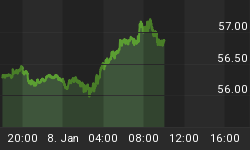Triangle is an Elliott wave pattern seen during sideways market consolidations, it is composed of 5 corrective sequences. Triangle presents a balance of forces between buyers and sellers, causing a sideways movement that is usually associated with decreasing volume and volatility. This pattern subdivide into 3-3-3-3-3 structures labeled as A, B, C, D, E.
Triangle is continuation pattern which breaks in direction of the preceding move. It could occur in wave 4 in an impulsive structure, wave B in a zig-zag and wave X connector in double and triple threes Elliott wave structures. It could also occur in wave Y of a WXY structure in which case it marks the end of correction.

Note: Triangle must be supported in RSI indicator as well and it never happens in wave 2 of impulsive structure.
Many wavers ignore the importance of decreasing momentum in a triangle formation. We at EWF use RSI to filter out other types of sideways consolidations. We like to see contracting formation in RSI as well when looking at a triangle formation.
The following chart shows how Elliott Wave Triangle looks like in real market.
$GOLD 2.6.2015 update: (X) connector has done as Triangle structure, which is composed of 5 waves A, B, C, D, E. All of them are corrective structures and each one is shorter than previous one. Target area for ending point of triangle is usually 61.8-76.4 Fibonacci retracement of wave C or 61.8-76.4 Fibonacci extension of C related to D.
After wave E retraced toward 61.8-76.4 fib zone, we got sharp decline in direction of previous trend. When the price broke below D low, we got confirmation that Triangle has ended at 1268.62.
If you would like to have an access of EWF analysis in real time, click here (URL: ) and feel free to join us. We provide Elliott Wave charts in 4 different time frames, 2 live webinars by our expert analysts every day, 24 hour chat room support, market overview, daily and weekly technical videos and much more.

















